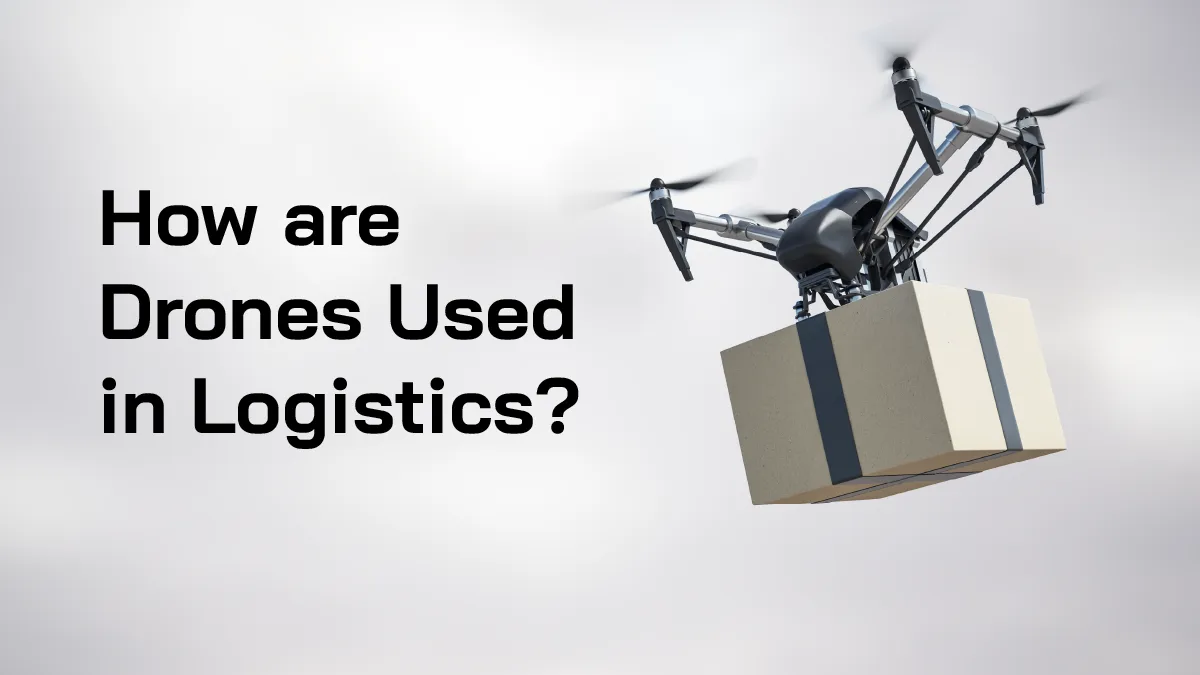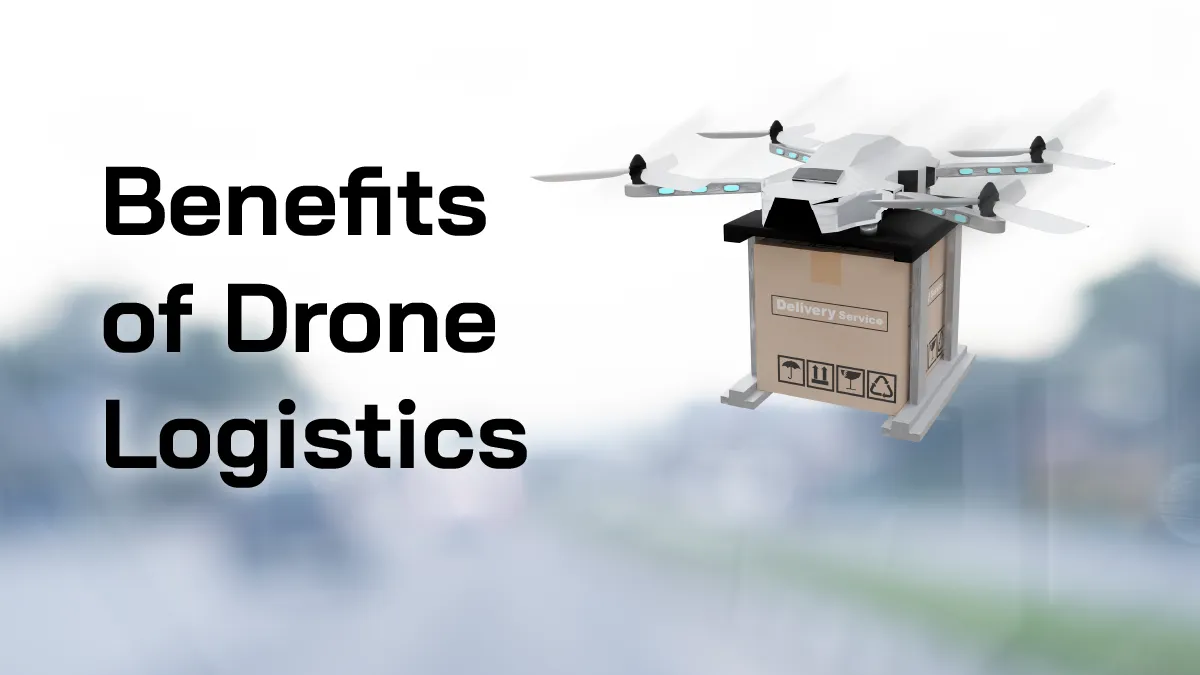In a world where convenience and urgency are crucial, customers prefer deliveries that take place more quickly. This has compelled logistics companies to reconsider their plans, seeking more economical and effective methods of product delivery. Drone logistics is one of this field’s most exciting new developments.
These autonomous devices have the power to completely change how businesses transport their products, particularly in the last mile. Let’s take a closer look at the expanding use of drone technology in logistics.
What is Drone Logistics?
Drone logistics is the use of drones, or unmanned aerial vehicles (UAVs), to perform tasks in the logistics industry. Drones can be used for a variety of purposes, including:
- Delivery: Drones can deliver packages quickly and efficiently, without getting stuck in traffic. They can also be used to deliver hot food, medicine, and other items.
- Inventory management: Drones can locate items, map shelves, and determine occupancy rates.
- Infrastructure inspection: Drones can inspect infrastructure and collect videos and images.
- Security surveillance: Drones can be used for security surveillance.
- Scanning: Drones can scan pallets inside distribution centers.
How are Drones Used in Logistics?

So, what is the precise role of drones in logistics? People may imagine package deliveries when they think of drone logistics. However, there are other ways in which businesses might use this technology.
These are five of the most popular applications for drones in logistics today:
- Package delivery
- Inspecting infrastructure
- Security surveillance
- Collection of videos and images
- Scanning of pallets inside distribution centers
Since drone technology is still in its early phases of development, the number of applications for drones will only increase. In fact, the need for last-mile delivery is predicted to increase by 78% by 2030. As a result, the promise of drones has drawn businesses and experts. They seek a more flexible and sustainable supply chain. The World Economic Forum (WEF) estimates that over 85 million goods and documents are sent daily throughout the world, a number that is constantly increasing and may be substantially enhanced by this cutting-edge technology.
Also Read: Technology in Supply Chain: Enhancing Speed, Efficiency, and Accuracy
Benefits of Drone Logistics

If some of the world’s largest corporations are using drones in their logistics, there must be a valid rationale for this. Efficiency and cost-effectiveness are among the major benefits of opting for drone logistics. Listed below are some of the main reasons behind its growing use.
● Projected financial savings
Drones are primarily used by businesses since they can save money. In one instance, drone deliveries were determined to be almost 90% less expensive than those made by a car-based service, according to Forbes®. The Irish business Manna, which operates live delivery in Galway, Ireland, was the focus of this study. Thus far, Manna has made great strides and successfully deployed its drone delivery service over the about 40,000-person metropolis. They have been licensed in Canada and the European Union as a result of their success.
● Speed and efficiency
The value of any supply chain tool that boosts speed with few downsides will be enormous. Businesses may reduce the chance of errors and save time by using drones to automate procedures.
One study estimates that by 2030, there will be 36% more delivery vans in inner cities due to rising e-commerce demand. Delivery times will slow down if an increasing number of delivery trucks crowd the roads and create traffic. A business that uses drones to fly perfectly overhead would have considerably happier customers. It will require new ways to meet the rising demand for products. This is especially true for forecasts for large cities.
● A greener solution
A company’s carbon footprint will drastically reduce when it switches to electric drones. In a separate study, Resource Systems Group (RSG®) compared the CO2 emissions from drones, automobiles, and delivery trucks. Given the volume of deliveries made each day, the study discovered that delivery cars released 26–28 times as much CO2 as drones. This is a startling statistic. Drones can be a better option for small “last mile” deliveries. They use fewer resources. But, they have a much smaller carrying capacity.
● Accessibility
Reaching more locations than previously is one of the other possible advantages of using drones in logistics. In hard-to-reach places, drones have delivered medical supplies. This includes the Democratic Republic of the Congo, distant First Nations communities in Canada, and island communities in Scotland. Drones can make it much easier to reach people and locations that are challenging to reach, which could save lives.
● Labor Cost Reduction
The impact of drones on labor expenses will be one of the main advantages for businesses. According to Business Insider®, drones have the potential to replace $127 billion in human labor in a variety of industries. Automation and modern technology enable you to complete tasks more quickly, with fewer workers, and in the case of drones, in a way that is safer for the environment.
● Lower Operating Costs
Drone utilization has the potential to drastically lower operating costs in the long run. Businesses can increase productivity and profitability by reducing the demand for delivery workers and the costs related to vehicle maintenance.
The Future of Drone Logistics
Drone autonomy, battery life, and recharge capacity are all expected to significantly improve as technology continues to advance. Also, data analytics and artificial intelligence will drive progress. They will optimize inventory and delivery routes.
However, future developments won’t be restricted to these features. They also involve creating drones with better navigation and more cargo capacity. This will improve delivery accuracy. Additionally, drone delivery services for urban areas are being investigated, where air traffic control will be essential. Delivery drones are likely to continue to be the exception rather than the rule when it comes to item delivery in densely populated areas. The use of drones is increasingly prevalent in rural areas.
Crucially, automation may result in the loss of some jobs, but it may also provide new opportunities. For instance, new requirements will emerge in fields like aerial systems maintenance and drone management. Companies must adjust to these changes. They need to find ways to use drones in their operations. To put it simply, the future of drones in logistics operations seems bright.
Final Thoughts
An important turning point in the development of logistics has been reached with the incorporation of drone delivery into operations. With the ability of drone logistics to transport packages rapidly and effectively, this technology represents a fundamental shift in the logistics paradigm rather than merely a development.
As companies improve drones for various industries, they will become vital for logistics. Fully autonomous drone deliveries will expand the limits of package transport.




